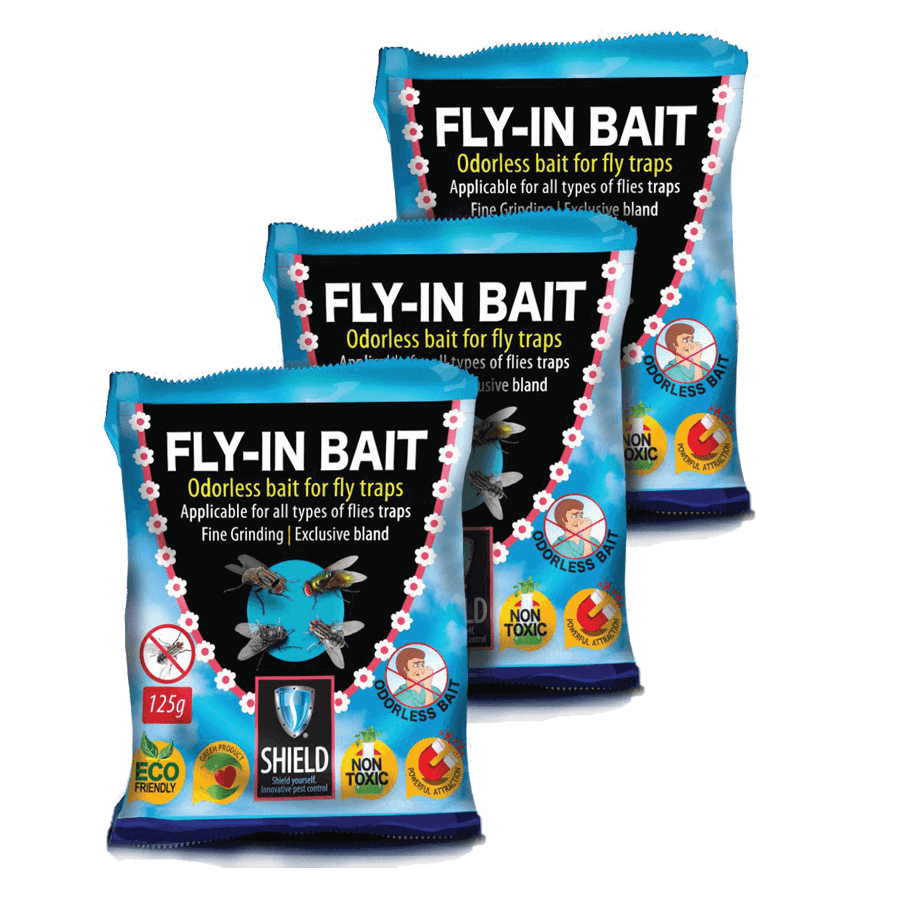
Fly strike fly bait skin#
If the stinger is below the surface, it will be shed with normal skin healing. The bee leaves its sting behind, so try to remove this with tweezers, as venom will continue to enter the skin. Bee stings, however, are acidic and should be bathed with bicarbonate of soda.

While wasps and bees are present throughout the day, mosquitoes are at their worst in the two hours after sunset.Īs they are alkaline, wasp stings should be bathed with a dilute acid, such as vinegar or lemon juice. Other problematic insects include mosquitoes, bees and wasps – these produce uncomfortable bites, as well as causing alarm to horses. Permethrin-based products are most effective directed at the legs. The best prevention is to maintain high hygiene standards, but repellents can also be used. They feed on horses’ legs and abdomens, and bites typically appear as itchy or painful wheals or papules with a central crust. Stable flies lay eggs in moist, rotting vegetation – typically, hay or silage that is contaminated with urine, water or manure – so are associated with poor hygiene. Bringing horses in before dusk and using a fan to create a brisk breeze helps keep midges away, while rugs may also be useful. Oil-based products can be applied several times daily to prevent flies landing. Permethrin-based products are best and should be applied in late afternoon. Insect repellents can be very effective against these pests. Classically, mane and tail hairs are broken or rubbed away, exacerbating sweet itch in animals that are allergic to the bites. Different species of midges feed at different sites on the horse. Eggs are laid in standing water, so avoid stagnant areas. fly-fish jig bloodworm baiting baited mole crab bait and switch whitebait. There is a small area open to bait fishing aimed at the. Midges (Culicoides) are 1mm-3mm long and hover in swarms at dawn and dusk. bite chum gudgeon lure angleworm strike bate nibble lugworm spoon berley. A few points to make: The Deschutes is largely managed for fishing with artificial flies and lures. Petroleum jelly applied inside the ears may prevent the insects biting. Synthetic pyrethroid fly sprays can act as a deterrent, although physical barriers such as ear nets and oil-based products – oil of citronella, for example – will discourage these flies from landing on the horse. Bites form as painful lumps, often with pin-prick areas of bleeding and crusting. These flies commonly feed around the face – particularly inside the ears, where they trigger allergic skin reactions to their saliva, and distract the horse – but also on the horse’s neck and underside. High-risk times are dawn and dusk during spring and early summer, when stabling may be helpful. View Now Other types of flies that trouble horsesīlack flies (Simuliidae) are small in size (approximately 2–5mm) and breed in rapidly moving water. This giant, reusable fly trap lures and kills up to 60,000 flies. An individual fly has an adult lifespan of 30–60 days, although the life cycle of the pest is one year. The flies typically emerge in June and July in the UK and horse fly season lasts throughout the summer months. The females will lay their eggs on wet soil or vegetation that overhangs damp/wet areas so the larvae can burrow into the soft soil and feed on the organic debris and small insects before they transition into the adult fly.

The adult horsefly is attracted to areas with moist soil, such as near streams and damp woodland. These flies will rarely venture into dark areas, so stabling can offer some protection, too. When protecting horses from flies during turnout, light coloured fly rugs are often used, along with fly repellents and fly traps, such as these on Amazon. As a result dark horses being exercised on warm summer days tend to attract horse flies more so than their lighter counterparts. There’s one bug-killing tool you won’t find here: bug zappers, which work about as well as any other indiscriminate mass slaughter.Horse flies are most active on warm, sultry days and are attracted by dark, rapidly moving objects, sweat and carbon dioxide. If you need to deal with bugs outdoors, we have guides to bug repellent, wasp and hornet sprays, and mosquito control gear, as well as an article about how permethrin can help you with ticks. We have a separate guide for ant problems, and we’re currently planning a guide to roach killers. This guide is mostly about dealing with houseflies. For two years, we’ve tested flyswatters, bug vacuums, and an assortment of bug traps to make our recommendations. To find the best bug-killing gear available, we turned to experienced exterminators and entomologists, and we interviewed a Caltech aeronautics professor who has spent more than 15 years studying the evasive flight behaviors of houseflies. Whether they’re spiders, flies, roaches, or centipedes, your first instinct is likely to get rid of them immediately. Unless you’re an entomologist, you’re probably not excited about having bugs in your house.


 0 kommentar(er)
0 kommentar(er)
